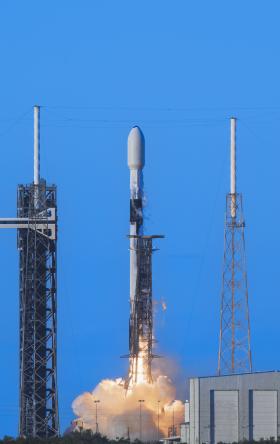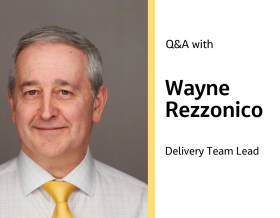
Can you tell us about the Mango Two program you’re working on?
Basically, through the Mango Two program Jacobs is working with another enterprise called Spire where we’re putting very small 3U CubeSats (2a, 2b) satellites into low Earth orbit. Spire will provide satellite buses to host the Jacobs payload. Jacobs is also collaborating with Spire for Mango Two’s ground network for mission scheduling and TT&C (telemetry, tracking, and command), while payload testing and data recovery will be conducted using a dedicated ground station. Launch and operation is slated for later this year.
What’s the problem being solved with this project?
Designing for space applications doesn’t encompass unique requirements alone. It requires a “space-culture” and understanding of development processes specific to, and expected of, responsible contractors. Mango Two does not just provide an opportunity to demonstrate and reduce risks on several aspects of Jacobs’ technologies; it creates a structured mechanism to develop transferable processes and best practices to company programs currently being pursued.
While Mango One (Jacobs’ precursor satellite project) was a pathfinder in developing our satellite experience, Mango Two will serve as a structured opportunity for both capabilities-based demonstration and spaceflight programmatics. Specifically, Mango Two creates, documents and employs systems engineering and mission assurance practices as would be applied to a customer-facing SmallSat program. This includes formally documenting requirements via Model Based Systems Engineering (MBSE), verification and validation traceability, non-conformance tracking and adjudication, conducting formalized gated reviews, earned value-lite tracking, lessons learned, system configuration management, and integration and test activities as examples.
Mango Two will also be flight qualifying the TREX SDR (Tiny - Receiver EXciter Software-Defined Radio). Additionally, a CSAC (Chip-Scale Atomic Clock) will be demonstrated along with support electronics as a part of the payload. Either developed as a standalone payload card or incorporated as part of the TBO (Transceiver Board), the demonstration of CSAC’s precise timing and synchronization between spacecraft is essential to geolocation and future applications. This hardware development will directly support two of the primary mission areas, namely demonstrating two-way time transfer between the vehicles and geolocation.
What is our impact for our client?
There are several aspects of the Mango Two effort that are of importance to Jacobs. The program presents an opportunity to both highlight Jacobs as a company that designs, builds and launches space hardware, and assert our intention to continue to evolve and grow through the launch of both internally funded and customer-funded space systems. The CubeSat program also offers a risk-appropriate opportunity to develop critically needed experience in Systems Engineering, Program Management and process-based development incorporating mission assurance processes and AS9100 practices.
Tell us about your roles on this program.
Autumn: As the Program Manager, I manage the overall program control and management of the effort. This includes developing and maintaining the program schedule, detailed budget & financial tracking, Integrated Mater Schedule (IMS), resource planning, purchasing oversight & coordination, risk management oversight, stakeholder coordination, contractual oversight & coordination, and internal coordination and briefings necessary for leadership and advocacy.
Megan: As the Technical Lead (TL), I oversee the day-to-day technical development, monitoring, recording, and reporting of the program. I work closely with the IPT leads in executing technical and programmatic direction from PM in support of the program objective and schedule. I set and monitor technical work products supporting the overall design, build, and test development activities. I also define and direct systems engineering activities (ex.: trade studies, analysis, risk mitigation planning, requirements, mission performance, etc.), and support production and test activities for milestone completion.
What excites you about working as part of Jacobs’ Divergent Solutions team?
What excites us both about working as part of Jacobs’ Divergent Solutions team is the diverse scope of the mission. We appreciate the experience gained from collaborating with the talented team of engineers to meet the needs of our growing group of customers. It allows us to respond to differing asks that require varying rapid solutions needing different perspectives.
Mango Two by the Numbers
-
2
3U CubeSats (Mango 2a and Mango 2b)
-
9
months to launch (SpaceX Falcon T9 Transporter)
-
12
month operational period of performance
-
2 nd
Mango-Series CubeSat
-
5
custom Jacobs hardware components
About the interviewees

Autumn Brown is a Lead Technical Program manager with a focus on space payloads at Jacobs. She has been with the company for 4.5 years and has over 10 years’ experience in the business development and management fields. Her focus is on space systems ranging from Small Satellite projects to large space systems. She graduated from Penn State University with a Bachelor of Arts.

Megan Biddlecomb is an Embedded Software Engineer with a focus on leading Small Satellite projects at Jacobs. She has been with the company for four years, and has nine years experience in the field. Her expertise is in Linux development and custom hardware bring-up. She graduated from Loyola University MD in 2014 with a Bachelors of Science.























































